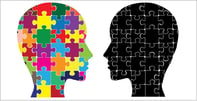Published on
Valuable Lessons from Experience

This is the third article in Dearing’s five-part series on learning organizations. Yesterday’s article focused on strategies managers can use to ensure innovation is happening in-house. This article looks at the importance of experience.
Experience, our Finest Teacher
Authentic learning from disasters to make a better enterprise.
Experience is often the best teacher in our personal lives. Often we learn more from something going wrong than from something going right. This is not usually the case in corporate life where, after a major event—product failure, downsizing crisis, merger—many companies stumble along, blind to the lessons for learning. Thus, mistakes get repeated, but smart decisions do not; there is no method of distilling good decisions from bad. Most important of all, the flawed ways of thinking are never discussed or revealed, remaining in place to give birth to new disasters.
Typically, individuals in an organization that has experienced a major failure will often tell you that they understand quite well what went wrong (or right). Yet these insights are rarely shared openly, nor analyzed in a way that allows them to be internalized by the company for later benefit. Why? Managers really have very few tools with which to capture institutional experience so they may share its lessons across teams and the organization, and translate these lessons into effective action.
To solve this problem of unused experience that could be employed to better the company, organizational leaders should create a Learning History that is used as a written narrative of a recent critical event. One method is to record the event in a two-column layout. One column is a record of relevant episodes as described by the people who took part in them, were affected by them, or who observed them; this column could be loosely viewed as the quantitative record. The opposing and parallel column is used to record recurring themes identified in the narrative, intending to trigger questions that can be posed by learning historians, trained outsiders, and knowledgeable insiders, about (formerly) un-discussable issues that were big factors in generating this event.
Peter Senge says that we learn best from our experience, and must seek to understand how these experiences are never directly linked in a nice neat ‘cause and effect’ equation. Cause is never directly next to effect, and the two can be separated quite a distance in time and space. When faced with a problem, actors are very quick to apply short-term ‘solutions,’ which yield temporary short-term results, thus no actual correction takes place and no learning occurs.
A Learning History helps form a basis for group discussions, both for those involved and for others who might also learn from it, yet may not be directly involved in the event. This tool is based on the ancient practice of community storytelling which is shown to build trust, expose important issues, transfer knowledge from one part of the company to another, and help build a body of generalizable knowledge about management that brings lasting, systemic performance improvement.
Tomorrow’s article will look at the value a research department can bring to a learning organization outside of R&D.
– – – –
References
Harvard Business School Press (1998), On Knowledge Management, Harvard Business School Publishing Corporation, Boston USA



